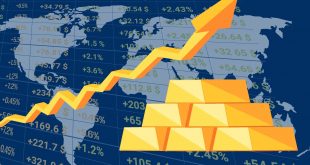The Reserve Bank of Australia is about to issue its decision on interest rates, and economists are discussing their predictions for this event as well as the effects of every conceivable scenario on the price action of the AUD/USD pair.
i) Hawkish +25 bps, likely by about 35%
More interest rate rises will be required over the next months, according to the central bank’s statement from February, and the market is expected to interpret this as securing 25 basis point rate increases in April and May. The AUD/USD pair may reach the 0.6800 level in this scenario.
ii) Basic Case: Neutral +25 bps, likely to increase by about 40%
The market is likely to interpret the central bank as being more uncertain and giving itself optionality on the outlook for policy rates if it switches back to language from the Dec. 22, Statement, saying that it is expected to raise interest rates further over the period ahead, but it is not on a predetermined course. In this case, the next 25 bps increase might occur in April or May. The AUD/USD pair may reach the 0.6730 level in this scenario.
iii) Dovish +25 bps, most likely by around 25%
In this neutral scenario, the monetary policy “lag” is reinstated. If the Bank accepts worse domestic data results, the market is likely to interpret this as the RBA giving one more hike before halting. The AUD/USD pair may reach the 0.6690 level in this scenario.
The Reserve Bank of Australia’s apparently continuous cycle of interest rate increases has sparked debates over whether monetary policy is the most equitable and efficient means to reduce inflation. This discussion is set to become more heated as RBA governor Philip Lowe is anticipated to announce a record-breaking 10th consecutive rate increase on Tuesday.
Simply put, inflation happens when there is an imbalance between supply and demand for goods and services, which raises prices. Australia has relied on monetary policy administered by an independent central bank in conjunction with fiscal policy administered by governments, primarily the commonwealth, for decades to maintain low inflation and economic expansion.
Prices were rising at a rate of about 8% per year by the end of 2022, the fastest since the early 1990s. It is difficult to imagine a strategy for bringing inflation under control that does not involve removing funds from the current economy. But, possibilities can also include raising interest rates, cutting spending, or raising the amount people save.
A borrower on a typical $500,000 loan will be paying more than $1,000 more a month on their debt compared to May of last year, assuming the RBA will increase the cash rate another 25 basis points to 3.6%, as predicted by the markets.
Governments may reduce spending, but people never support such a move. A different option would be to increase taxes so that people pay more to the government. The Morrison administration’s stage-three tax cuts may be repealed or modified to achieve a similar result, but it would be difficult for the government to do so because it would appear that they were betraying their commitment.

 Noor Trends News, Technical Analysis, Educational Tools and Recommendations
Noor Trends News, Technical Analysis, Educational Tools and Recommendations




